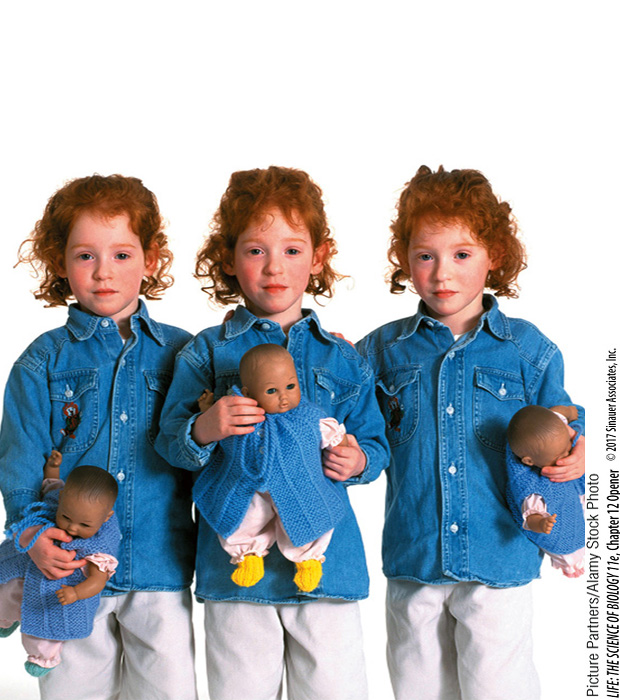Chapter Introduction
Inheritance,
Genes, and
Chromosomes

investigating life
What Are the Rules of Inheritance?
Red hair is the rarest natural hair color in humans, with a frequency of about 1 percent. It is most common in northern Europe, with Scotland leading at a frequency of about 15 percent. Throughout history people have attempted to find a correlation between red-
Given its rarity, it is not surprising that red hair was an early subject of investigation in genetics, the science of heredity. As you will see in this chapter, the foundations of modern genetics were laid late in the nineteenth century through careful experimentation on pea plants by Gregor Mendel. By the early twentieth century, biologists examining human families noticed that in most cases, red-
After hearing her professor discuss theories about the inheritance of red hair, Ellis investigated her family tree dating back six generations, noting which relatives had red hair. She surmised that all the redheads in her family were the offspring of either two dark-
Sometimes, however, red hair pops up in families with no genetic history of red hair. In this chapter we’ll examine various patterns of inheritance and the genetic mechanisms by which they arise.
How do inherited characteristics such as red hair skip generations?